Name Yoshiko Kawashima Parents Shanqi | Grandparents Longqin Great-grandparents Huafeng | |
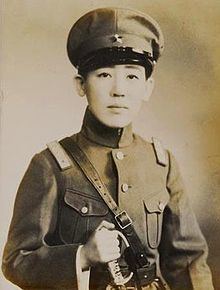 | ||
Born 24 May 1907Beijing, Qing Empire ( 1907-05-24 ) Similar People | ||
Yoshiko kawashima
Yoshiko Kawashima (川島芳子, Kawashima Yoshiko, 24 May 1907 – 25 March 1948) was a Chinese princess of Manchu descent. She was raised in Japan and served as a spy for the Japanese Kwantung Army and puppet state of Manchukuo during the Second Sino-Japanese War. She is sometimes known in fiction under the pseudonym "Eastern Mata Hari". After the war, she was captured, tried and executed as a traitor by the Nationalist government of the Republic of China. She was also a notable descendant of Hooge (prince), eldest son of Huangtaiji.
Contents
- Yoshiko kawashima
- Yoshiko Kawashima
- Names
- Family background and early life
- Espionage career
- Capture trial and execution
- In popular culture
- References
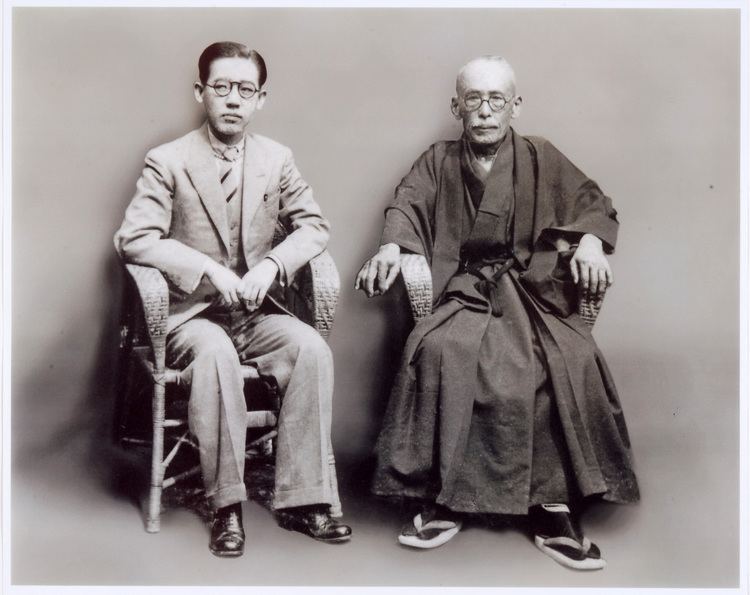
Yoshiko Kawashima
Names
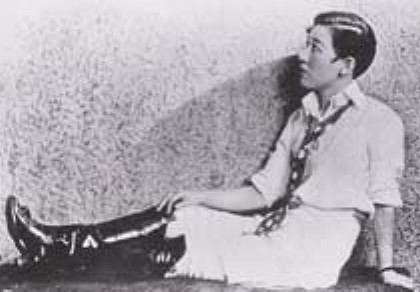
Kawashima was born in the Aisin Gioro clan, the imperial clan of the Manchu-led Qing dynasty. Her birth name was Xianyu and her courtesy name was Dongzhen (literally "eastern jewel"). Her Sinicised name was Jin Bihui. She is best known by her Japanese name, Kawashima Yoshiko (Chuandao Fangzi).
Family background and early life
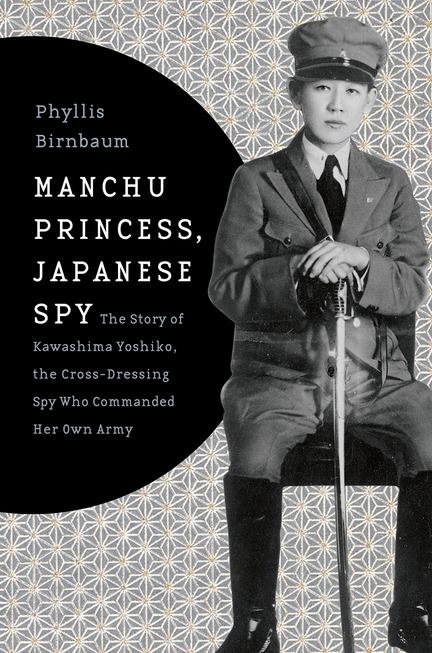
Kawashima was born in Beijing in 1907 as the 14th daughter of Shanqi (善耆; 1866–1922), a Manchu prince of the Aisin Gioro clan, the imperial clan of China's Qing dynasty. Her mother was one of Shanqi's concubines. Shanqi was a descendant of Hooge, the eldest son of Huangtaiji (the second ruler of the Qing dynasty). Shanqi was also the tenth heir to the Prince Su peerage, one of the 12 "iron-cap" princely peerages of the Qing dynasty.
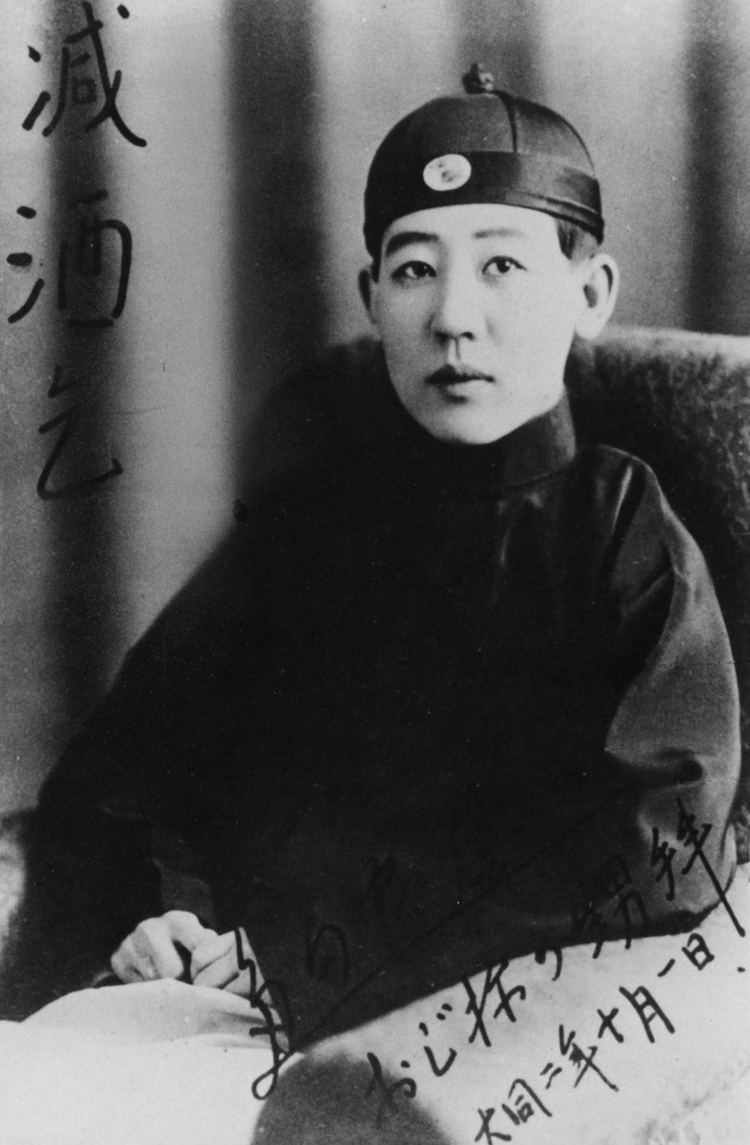
After the Xinhai Revolution overthrew the Qing dynasty in 1911, Kawashima was given up for adoption at the age of eight to her father's friend, Kawashima Naniwa, a Japanese espionage agent and mercenary adventurer. She was raised and educated in the Kawashima family house in Matsumoto, Japan. Her stepfather changed her name to "(Kawashima) Yoshiko". As a teenage girl, she was raped by her stepfather's father and later had an affair with her stepfather himself.

Kawashima's biological father, Shanqi, died in 1922. As Kawashima's mother had no official identity as Shanqi's concubine, she followed Manchu tradition and committed suicide to join Shanqi. Kawashima was sent to school in Tokyo for an education that included judo and fencing and then lived a bohemian lifestyle for some years in Tokyo with a series of rich lovers, both men and women.
Espionage career
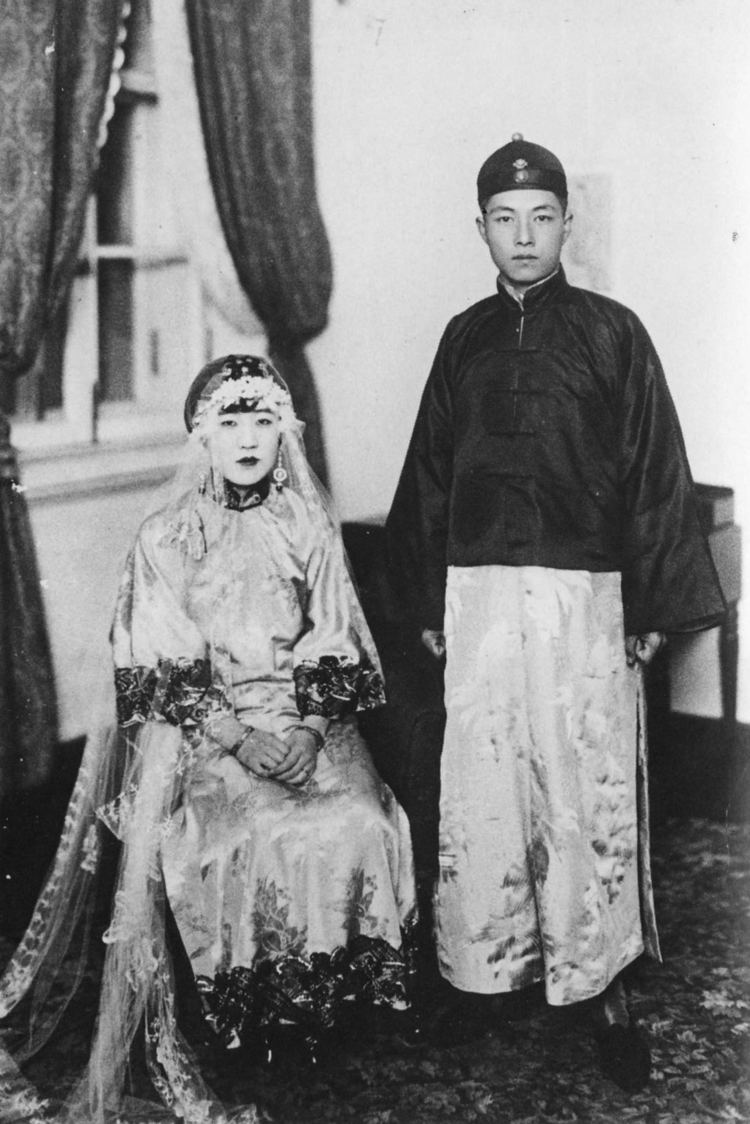
In 1927, Kawashima married Ganjuurjab, the son of Inner Mongolian Army general Jengjuurjab, who led the Mongolian-Manchurian Independence Movement based in Ryojun. The marriage ended in divorce after only two years, and Kawashima moved to the foreign concession in Shanghai. While in Shanghai, she met Japanese military attaché and intelligence officer Tanaka Ryukichi, who utilised her contacts with the Manchu and Mongol nobility to expand his network. She was living together with Tanaka in Shanghai at the time of the Shanghai Incident of 1932.
After Tanaka was recalled to Japan, Kawashima continued to serve as a spy for the general Doihara Kenji. She undertook undercover missions in Manchuria, often in disguise, and was considered "strikingly attractive, with a dominating personality, almost a film-drama figure, half tom-boy and half heroine, and with this passion for dressing up as a male. She possibly did this in order to impress the men, or she may have done it in order to more easily fit into the tightly-knit guerrilla groups without attracting too much attention".
Kawashima was well-acquainted with Puyi, the last emperor of the Qing dynasty, who regarded her as a member of the imperial family and welcomed her into his household during his stay in Tianjin. It was through this close liaison that Kawashima was able to persuade Puyi to become a figurehead ruler for Manchukuo, a puppet state created by the Japanese in Manchuria. However, Kawashima privately criticised Puyi for being too amenable to Japanese influence.
After Puyi became Emperor of Manchukuo, Kawashima continued to play various roles and, for a time, was the mistress of Tada Hayao, the chief military advisor to Puyi. She formed an independent counter insurgency cavalry force in 1932 made up of 3,000-5,000 former bandits to hunt down anti-Japanese guerilla bands during the Pacification of Manchukuo, and was hailed in the Japanese newspapers as the Joan of Arc of Manchukuo. In 1933, she offered the unit to the Japanese Kwantung Army for Operation Nekka, but it was refused. The unit continued to exist under her command until sometime in the late 1930s.
Kawashima became a well-known and popular figure in Manchukuo, making appearances on radio broadcasts, and even issuing a record of her songs. Numerous fictional and semi-fictional stories of her exploits were published in newspapers and also in the pulp fiction press. However, her very popularity created issues with the Kwantung Army, because her utility as an intelligence asset was long gone, and her value as a propaganda symbol was compromised by her increasingly critical tone against the Japanese military's exploitative policies in Manchukuo as a base of operations against China in the Second Sino-Japanese War, and she gradually faded from public sight.
Capture, trial and execution
After the end of the war, on 11 November 1945, a news agency reported that "a long sought-for beauty in male costume was arrested in Beijing by Chinese counter-intelligence officers." The Supreme Court of Hebei originally addressed Kawashima as "Chuandao Fangzi" (the Chinese pronunciation of her Japanese name). When her trial began a month later, Kawashima identified herself by her Chinese name, "Jin Bihui", which eventually became the name court officials used. However, in accordance with her lawyers' strategy to deflect her charge of treason, she gradually began to emphasise a Japanese or Manchu banner identity. The court rejected the defence's bid to have her tried as a war criminal rather than as a domestic traitor, based on a combination of jus sanguinis and Kawashima's failure to formally renounce her citizenship through China's Department of Civil Affairs. Found guilty in 1948, she was executed by a pistol shot into the back of her head.
In popular culture
Kawashima has been depicted in numerous films and television dramas since 1932 by various actresses. She was featured in Bernardo Bertolucci's 1987 film The Last Emperor, where she appeared as "Eastern Jewel", played by Maggie Han. A film titled Sen'un Ajia no Joō about her was released in Japan in 1957. Anita Mui portrayed Kawashima Yoshiko in a 1990 Hong Kong film, Kawashima Yoshiko. She was also portrayed by Kikukawa Rei in the 2007 Japanese drama Ri Kouran, which tells the story of the life of Yoshiko Yamaguchi. Meisa Kuroki portrayed Kawashima in the 2008 Japanese drama Dansō no Reijin: Kawashima Yoshiko no Shōgai.
In the Chinese language, Kawashima's name (both Chuandao Fangzi and Jin Bihui) are synonymous with the idea of a "female spy" or a hanjian.
